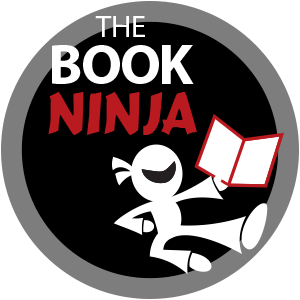Many children’s book authors never get published because they get hung up trying to find an illustrator. After all, as authors we’re attached to our work, so hiring an illustrator and entrusting the fate of your “baby” to someone else to help bring it to life is a daunting thought. But for those authors who wish to see their characters come to life in living color and impacting the lives of people everywhere, here are some basics on how to work with a professional illustrator:
Study Their Portfolio
Some illustrators can execute a broad range of styles, while others stick to one or two styles. If you prefer a cartoon look, don’t hire an illustrator whose portfolio only shows realistic work. If you prefer watercolor and ink or computer drawn vector art, don’t hire an illustrator whose portfolio only includes oil paintings. In short, before hiring anyone, ask if you can see examples of various styles, techniques and mediums they use. If an illustrator has a website featuring their portfolio, it shows they are more professional in that they want to make it easier for you to make a decision and show you their work in one spot. If you find an illustrator who has many styles available and you like several of them, make an appointment to speak with that illustrator (or company) and discuss options for your book.
Illustration Pricing
Once you’ve settled on an illustrator whose work you like and make an appointment to speak with them, ask them for a quote. They will probably ask you several questions regarding what style you want, what technique such as water color painting or computer drawing you like, and what your budget is. Keep in mind the more detailed the illustration, the higher the price. The more simple and cartoon-like the illustration, the lower the price. And some illustrators will tell you computer-drawn is cheaper than drawing or painting by hand, so make sure you do your homework and understand what style you’re getting for your budget. Overall, don’t expect a realistic style (no matter how simple) for a cartoon price. A lot more work than you might think goes into illustrations and concepting, and if you prefer the look of oil painting over computer-drawn, don’t expect the computer-drawn to come back looking exactly like hand-rendered oil on canvas.
According to the Graphic Artists Guild Handbook: Pricing & Ethical Guidelines, which most artists and designers adhere to, full color illustrations can range between $197-497 per page. The simpler the illustrations, the lower the price can go. If you have a standard 32-page children’s book fully illustrated in a more realistic style or a style that involves an art medium such as watercolor or oil, you can expect the higher end of that range. And if the style you choose requires materials other than a computer, you can expect to be billed for the cost of those materials as well. At the high end of the spectrum, a 32-page children’s book can cost around $6400 for a professional illustrator executing a realistic style. The best way to keep this cost down is to have the illustrator produce very simple, or more cartoon-like, illustrations.
Give Them Time
Illustrators, like most (OK, all) artists, are not members of Mindreaders Annonymous. In my professional experience, illustrators do not get the style perfect in the first initial concept. Usually you as the author are very sure of what you don’t want, so you may go back and forth with an illustrator to narrow down what you don’t want until they come up with something you do want. While concepting, illustrators will send a few versions of a main character, then you as the author need to send them your feedback. What do you like about them? What do you not like? Do you not like the style? Would you rather see a different style?
The worst thing you can do to an artist who spends hours studying your manuscript and directions to come up with concepts close to what you describe is, “I’m just not feeling it. I’m going to hire someone else.” This may give the illustrator an impression about you that you do not want in a working relationship. First, it tells them that you don’t know what you want until you see it, which is fine as long as you give the illustrator time to come up with something you will want. And second, that you may have a tendency to change your mind without any explanation, which makes the artist wonder what they did wrong and if they can correct it in the future.
Most professional illustrators are willing to take the time necessary to work with you to come up with a character and scenes for your book that you will fall in love with. The question you need to ask yourself is, are you going to get frustrated if they don’t get it right in the first concepts? Or are you going to give them the time they need to experiment until they come up with something you will love? What can you and your illustrator do to communicate what you want clearly, so the illustrator will nail down what you love?
In conclusion, coming up with a character that will live on in the hearts of children forever takes dedication, courage, and a delicate balance of respect between author and illustrator. A professional illustrator understands the attachment you hold to your characters and vision, and they will do their best to match that vision–if you let them. Keep in mind sometimes your vision may not be attainable in the style you choose (or the style your budget allows), so you may need to make some compromises. Good illustrations take time. Illustrators should be respected for their craft and their ability to pull what’s in your head out and to breathe life into it. As you can imagine, that is not an easy task!


As an illustrator, and one who is very aware of how the publishing industry treats children’s book illustrators (all illustrators), I am happy to hear you mention the Graphic Artists Guild Handbook: Pricing & Ethical Guidelines as this is an industry standard. Thank you!
Also remember that many illustrators are no longer taking the old “advance royalties” payment options. Flat rate fees, (as they do in the majority of EU countries is becoming the norm). Also, when contracting an illustrator, you are contracting for “custom” work, as opposed to “stock illustration” and that this requires time and effort that needs to be reimbursed on the front end – even if its taking time to read your manuscript, and come up with initial sketches, be prepared to pay them for their time and work even if you decide not to go with them. This is also known as a “kill fee” which is described in detail in the book mentioned above.
You are hiring a “custom specialist” to bring your dream book to a visual reality, and you must know-what-you-want it to look like and how you want it to “feel” like -before- you approach an illustrator.